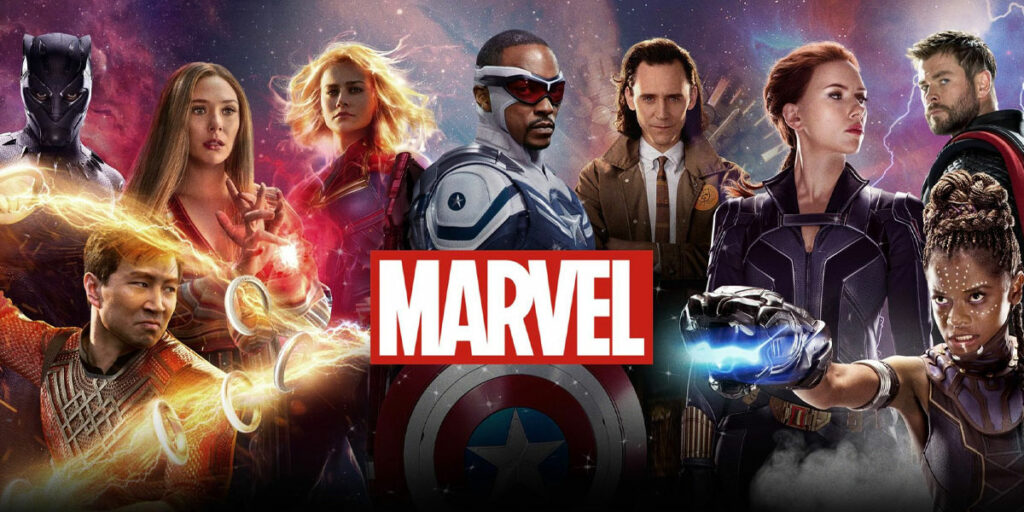Despite its once grand status, Phase 4 of the MCU has soured the franchise’s reputation in a number of people’s eyes, but just what went wrong?
Remember 2019? I know that feels like a milennium ago to some, but try to remember, back when Avengers: Endgame hit theaters. We were all so excited to see the conclusion to the Infinity Saga of the MCU. And when we did see it, people were ecstatic. All the characters we fell in love with coming together in an epic, moving climax, and what truly felt like a realization of the franchise’s 10-year run. We cheered for it, and left the theatre satisfied.
Now here we are, three years later, with Black Panther: Wakanda Forever closing out Phase 4 of the MCU. And opinions on the franchise have changed, to put it lightly. Go online and search up “MCU Phase 4” and you will find a veritable avalanche of articles along the lines of “why Phase 4 sucks,” “Phase 4 is going wrong,” or “Phase 4 ruined all my stocks and killed my livelihood and drove me out to beg for money in the streets.”
What went wrong? How could things have changed so much with just one phase? Why are the people who initially cheered at the end of Phase 3 now furiously lambasting the franchise for what came after? Perhaps this topic has been dealt with by all the aforementioned articles, but I still feel the need to contribute. It’s important to look back and see just why the MCU’s reputation has been stumbling so much these past few years. This is not because I want to kick it when it’s down, but because I still want to see it do better, for the producers to look at the points everyone is making and take that criticism into account.
Hence, here’s my retrospective on the major issues with Phase 4 of the Marvel Cinematic Universe.
PHASE 4 OF THE MCU: A BRIEF HISTORY

Phase 4 of the MCU covers movies from Black Widow, Shang-Chi and the Legend of the Ten Rings, Eternals, Spider-Man: No Way Home, Doctor Strange in the Multiverse of Madness and Thor: Love and Thunder to Black Panther: Wakanda Forever. It also includes a good number of Disney+ TV shows, such as Wandavision, The Falcon and the Winter Soldier, Loki, Hawkeye, Moon Knight, Ms. Marvel, and She-Hulk: Attorney at Law. Each of them details the aftermath of established characters following Avengers: Endgame, as well as introducing new characters who will lead the franchise onwards.
As for the overarching narrative, it’s no longer about the infinity stones. Instead, a new concept has been introduced: the multiverse. The universe we have been seeing up till now is only one of many, and out there are countless more threats that could cross over entire dimensions to threaten the structure of reality itself.
And here we already see the first thing wrong with this phase.
A CONFUSED DIRECTION
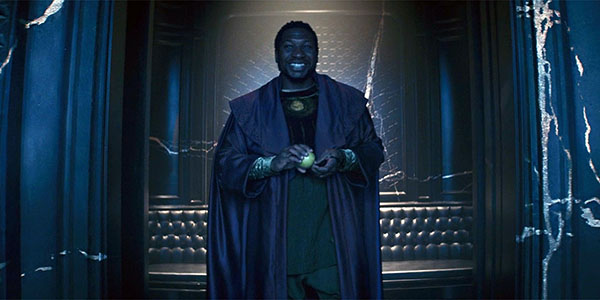
With the first three phases, we had separate stories about the characters. But there were almost always some elements about each of them that not only tied them together, but actively built up towards a greater crossover. Side characters we’ve seen from one movie would appear in the other, namely Nick Fury popping up all over Phase 1 to remind us that the Avengers were coming, and post credits scenes would reveal some truth about a new infinity stone. Some of them, like Iron Man 2, garnered some criticism about how it focused more on cameos like Black Widow or Captain America’s shield, acting as filler until the main event, but it still managed to raise anticipation for what was to come.
In Phase 4, however, characters are mostly off doing their own thing. Some side characters do show up or get mentioned, but for the most part, the way each of the respective stories ends doesn’t lead then to a crossover story. In fact, this is the only MCU phase so far to not include a crossover event like the Avengers movies. This has led to many calling this phase as meandering or aimless.
However, I actually prefer that approach, at least for the time being. In fact, after Avengers: Endgame, I actively wished that the MCU would take a breather of sorts, a time to wind down, take a break from grand arcs and focus on smaller, individual stories. Going directly into another three-phase saga would have felt overbearing, like going to a nightclub right after shopping all day. So, the fact that the Phase 4 entries seem to be off doing their own separate things isn’t the issue for me.
The issue is that they aren’t separate enough. Marvel has recently announced that phases 4 to 6 will be the part of the Multiverse Saga, yet another adventure spanning three phases. This leaves Phase 4 in a rather awkward spot, where it’s telling a number of disconnected narratives but also has to be a setup for the grander picture and the eventual new crossover.
Therefore, what we ultimately get is a mismatched collection of stories with differing priorities. Think of entries like Black Widow or Wakanda Forever. Black Widow was essentially a prequel to Infinity War and thus had no bearing on the story of Phase 4, while Wakanda Forever kept its story laser-focused on just Wakanda and Talocan. But then we have stuff like Loki devoting its entire final episode to introducing Kang the Conqueror (Jonathan Majors) as the next Thanos, or Doctor Strange in the Multiverse of Madness bringing up incursions and some Charlize Theron cameo, characters that those other than hardcore comic fans would have trouble understanding why they are significant.
Phase 4 essentially tries to have its infinity gauntlet and snap it too, as it wants to be a series of separate adventures and also be the start of the Multiverse Saga. By not committing to either direction, neither feels fully fleshed out, which may be the real reason why this phase feels like it’s beating around the bush. And this could be detrimental to the upcoming phases, as their saga will be based upon this meandering foundation.
NEW AND OLD CHARACTERS IN PHASE 4
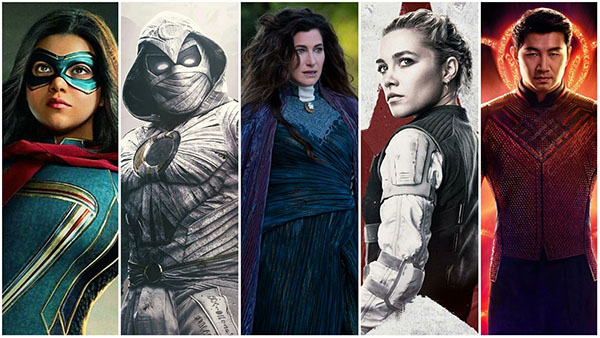
Phase 4 brings in new characters to explore while also continuing the stories of preestablished characters. That itself is fine: in fact, I already adore some of the newcomers. Hawkeye’s Kate Bishop (Hailee Steinfeld), for instance, was the best part about the show thanks to her well-rounded personality as well as physical and emotional vulnerabilities that humanized her. In Ms. Marvel, Kamala Khan (Iman Vellani) similarly captured my heart thanks to her quirky energy exploding off of her performance. I ended up enjoying even the more controversial ones, like She-Hulk (Tatiana Maslany), despite the fact that the CGI makes her look like Shrek’s princess Fiona doing an office worker cosplay.
Sadly, not all of the characters in this phase are winners. In fact, they often don’t get the focus at all. Despite having his name in the series’ title, Loki (Tom Hiddleston) spends most of his time without much real agency, and the show instead hands the reins off to his alternate universe female variant Sylvie (Sophia di Martino), to the point where she is the one that commits the final climactic action instead of the supposed main character. Similar issues can be found with other entries, where the main characters either don’t feel like they have agency most of the time, such as Dr. Strange (Benedict Cumberbatch) in Multiverse of Madness, or have their arcs squeezed in alongside other arcs that are just as prominent, like Thor (Chris Hemsworth) in Love and Thunder.
We also have some of the newcomers not hitting quite as hard as the others. This mainly regards the ones introduced in other characters’ solo movies. America Chavez (Xochitl Gomez) in Multiverse of Madness remained essentially a power macguffin until the very end of the climax, to the point where the story wouldn’t have felt much different if you replaced her with a magical artifact or something. Ironheart (Dominique Thorne) in Wakanda Forever had a relatively more solid reason to exist in the story, but in terms of exploring her actual character and motives, she felt largely lacking. This is especially disappointing considering that the MCU has successfully introduced new characters in other characters’ movies before. Black Panther (Chadwick Boseman) in Captain America: Civil War is a prime example, as the film managed to weave in his personal growth organically into the overarching plot.
With the previous phases, whenever we got introduced to a new character, they were allowed to fully shine, so much so that the villains would often get shafted and fuel the once popular “MCU can’t make good villains” meme. But Phase 4 often seems strangely unwilling or unable to explore their main characters to their full potential. And when the characters feel weaker, it’s like having a dumpling with only half the fillings. Unless you fill the rest of it in, it’s going to implode sooner or later.
QUALITY OF PHASE 4 ‘S ENTRIES

Another thing that went wrong with Phase 4 is that the individual entries haven’t been entirely consistent. This isn’t necessarily a new issue: the MCU has received criticism in the past about how their movies were often entertaining and solid, but not exceptional. But Phase 4 seems to be slipping even below that initial “good enough” quality line, as we have had multiple entries that, even on their own, have failed to deliver a fully competent story.
For instance, we have had multiple cases where the movies or shows have become especially bland in their climax. Wandavision, for instance, starts off with an eerily creative sitcom format layering a story about Scarlet Witch (Elizabeth Olsen) suffering from grief due to her losses from Avengers: Infinity War. However, the show drops all the subtler emotional buildup for its final few episodes and instead has flying witches shooting the tears of overworked vfx artists at each other.
Shang-Chi and the Legend of the Ten Rings makes a similar misstep. The film lays out an emotionally stirring clash between Shang-Chi (Simu Liu) and his father Wenwu (Leung Chiu-Wai), with how the loss of their family changed them in different ways. Then in the final act, some the giant dragon/wyvern is brought up at the last minute, comes swooping in and sucks the engagement out of the film for a CGI dragon fight with admittedly twice the spectacle but half the investement. Then we have outright disappointments such as Love and Thunder, where director Taika Waititi thought the jokes were the only reason people liked Thor: Ragnarok and decided he just needed to give more of that for the sequel.
Again, this isn’t necessarily an issue exclusive to Phase 4. But now that we’re more than a decade into the series, seeing it make the same mistakes or release outright mediocre entries is becoming less and less tolerable. At this point, the MCU should have learned that good isn’t enough, and that they need to make sure every entry is poignant. This doesn’t necessarily condemn future projects of the MCU, as stuff like Wakanda Forever shows that good writing can still result in exceptional movies, but it does make it harder to stay optimistic.
COMIC-BOOK ELEMENTS

Back when it first started out, the MCU took on a fairly realistic tone. Sure, there was the occasional norse god flattening a New Mexico town, but for the most part, the stories we saw were grounded, based on science and technology. It is only after several movies that we started to see weirder stuff like Paul Rudd knocking away a giant Thomas the Tank Engine or Benedict Cumberbatch making an interdimensional invader ragequit.
It was a smart move, as while these are comic book-based movies, actual comics can get quite strange. It would have been too jarring for newcomers if they were suddenly thrown into concepts such as incursions, vengeful demons, or a genetic clone of Thomas Edison fused with a parrot. (Yes, that is real) The movies built up to the bizarre, slowly extending the limit of how far the audience were willing to suspend its disbelief.
But now that we’ve gotten to Phase 4, things are getting more openly bizarre. And that’s fine: after the purple space alien, I’d say people can accept more now. It’s why we are getting entries like Loki or Thor: Love and Thunder, where we see alternate universes or Eternity, some omnipotent wish-granting being at the center of the universe that no one brought up before. Even the set designs or costumes have gotten more colorful and accurate to their comic counterparts. I mean, look at Thor’s armor in Love and Thunder, it looks like the designer binged too much Power Rangers the previous night.
The issue, however, once again comes down to commitment. The MCU introduces these concepts, but they’re merely playing around with them instead of fully exploring, mainly regarding the multiverse. The most obvious case has to be Doctor Strange in the Multiverse of Madness, or, to put it more accurately, Doctor Strange in Three – More like Two and a Half – Universes. The setting was rife to really show us what sort of crazy alternate universes were out there, but all we get are a few glimpses and we spend most of our time in just one new universe that’s only mildly different. We also don’t see much in terms of new spells that Dr. Strange could cook up.
This sort of issue comes up in other entries too. Thor: Love and Thunder, for instance, briefly takes place in a city of gods, where deities from all sorts of cultures and dimensions come together. It’s quite dazzling and creative: I mean, we even see that there is a god of dumplings. Yet we only stay in that city for a few scenes, and never see those gods again. It ends up feeling more like a detour than anything else, even if we did get to see Chris Hemsworth’s naked behind because of it.
Thus, Phase 4 tries to bring in more comic book elements, but doesn’t fully capitalize on them, making them feel more like gimmicks than legitimate themes. It is disappointing to comics fans, who won’t see the zany insanity they loved fully realized onscreen, and it is alienating to relative newcomers, who may find such concepts too big or even silly to swallow. The phase either needed to be bold enough to fully cross over into fantastical territories, or grounded those concepts enough to be widely accessible. As it is, it misses two birds with one stone.
AN OVERSTUFFED RELEASE SCHEDULE
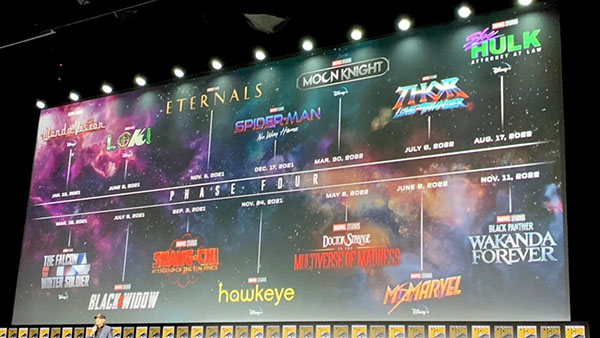
But all of the problems discussed above cannot compare, in my opinion, to the biggest thing wrong with this phase, and that is the release schedule. Let’s take a look back at the previous phases. Phase 1 lasted five years and spanned six movies. Phase 2 lasted three years and also spanned six movies. Phase 3 was a bit meatier, going for four years and covering eleven movies. There were also some tv shows, but in terms of the overarching Infinity Saga, they were mainly inconsequential.
Now let’s look at Phase 4. It lasted two years, from January 2021 to November 2022. Since then, we have gotten seven movies and seven tv shows, filled with major characters and are more closely connected to the overall Multiverse Saga. This means we have gone through fourteen entries in the span of twenty-three months, which would mean a new entry every month and a half on average.
This is too much. Even if you are the most die-hard fan of the series, there is a point where keeping up with a new entry stops being a fun new exploration and instead starts feeling like ticking boxes off a household chore list. This is especially so because with the Disney+ shows, the runtime will naturally be even longer, and harder to quickly consume. Granted, you could always put off watching some of them until later, but then that would mean the series has lost its ability to hook you into its ongoing saga.
This release schedule, more overstuffed than a foie gras goose, is what really makes the aforementioned negative factors really sink in. The phase wouldn’t feel so inconsistent in quality if the mediocre ones came at a slower pace. The characters would have better time to shine if they didn’t have to almost immediately make room for the next. The series’s current direction wouldn’t feel so jumbled if each building block took time to settle in and give people ample time to discuss future possibilities.
It is quite baffling just why Phase 4 is trying to cram out all it has in such a short time. Is it money? Do they somehow need more revenue despite Avengers: Endgame rivaling Avatar as the highest grossing movie of all time? Are they somehow short on budget despite skimping on paying all their overworked vfx artists? There just doesn’t seem to be a logical explanation for why the series would butcher its own pacing like this and it is infuriating. At this point, I am thoroughly burnt out, and the fact that they have announced so many upcoming entries right to the end of Phase 6 is not helping matters in the slightest.
THE MCU CAN DO BETTER
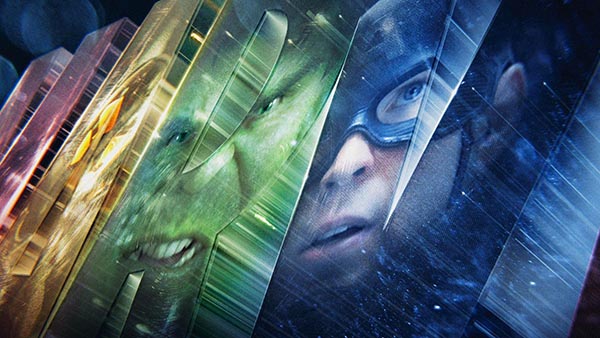
I am not done with the MCU. After several paragraphs picking apart the series, it may be hard to believe, but it’s true. I haven’t condemned the series as a failure yet. I don’t want to. I still want it to succeed, because I have seen what it could do. I still remember the Infinity Saga, where I got excited for new entries, new characters, new plot points, spending more time than is healthy discussing how viable the “Ant-Man going up Thanos’s butt and killing him” theory was.
It may seem like I am coping, and it very well may be. But when a franchise has done something unprecedented like this, building a ten-year story and bringing it to a satisfying conclusion, you know that they have the potential to do more. I really want to eventually feel what I felt back in 2019, when I watched Avengers: Endgame. Hopefully Wakanda Forever will restore some of people’s faith in the series, and the producers actually take criticism for when Phase 5 starts. But if worst comes to worst, I wouldn’t be shocked either.

